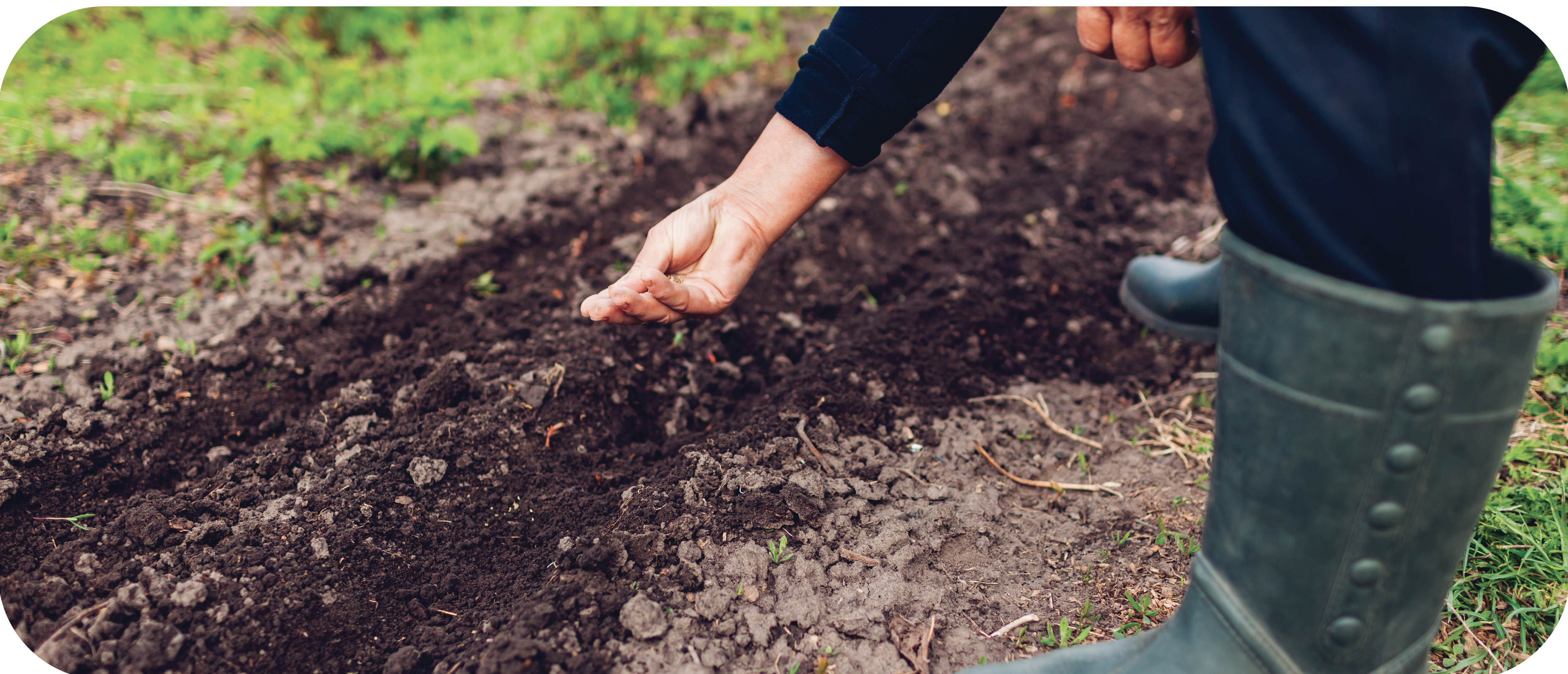How to prepare for spring planting
After months of enduring cold weather and harsh winter conditions, your lawn and garden are in need of a little TLC to prepare for the spring growing season. By adding a few outdoor chores to your to-do list and updating your regular maintenance routine in the early spring, you’ll see great results.
Keep reading to see our spring lawn and garden tips to get your lush, green grass back and see beautiful blooms in your garden once again.
Early spring lawn care tips
One of the first things people ask us as we enter spring is, “when do I need to start watering my lawn?” While it’s tempting to turn on your sprinklers after the first sunny day, we recommend waiting until later in the season when we start experiencing consistent hot, dry weather. This waiting period allows the roots to strengthen their hold as they grow deeper into the soil, looking for moisture. Your grass will quickly recover once you return to a regular watering schedule in a few weeks.
In the meantime, here are a few tips to prepare your lawn this time of year.
Tip 1: Clean up your yard
This time of year is just a taste of what summer will bring– warmer weather and even more quality time spent outside! Get started by spending some time picking up trash, twigs, and branches. Next, rake up any remaining leaves, then loosen and remove the dead grass that can contribute to your lawn’s thatch layer.
Tip 2: Tune up your lawnmower
Is your lawnmower in good shape for the season? Give it a good inspection: check the air filter, ensure blades are clean and sharp, change the oil, and fuel it up to be ready to go later in the season.
Tip 3: Treat weeds early
Early spring is the perfect time to consider the needs of your lawn and apply pre-emergent herbicides or fungicides accordingly. Whether you need to prevent and target weeds or eliminate insects and pests, there are several great products with detailed timing recommendations and application instructions.
Tip 4: Service your sprinkler system
Before the watering season begins, inspect your sprinkler system to ensure it made it through the winter with no issues. If you cannot repair your sprinkler, have it serviced by a local lawn care company or sprinkler repair company.

Early spring gardening tips
If you thought you were done with spring cleaning, think again! Just like your home, your garden and home’s landscaping could use some extra attention to get into shape for the warmer months to come. Here’s a look at some early spring tips for getting back into the garden after a long winter.
Tip 1: Clean up your garden
Chances are some debris and leaves from fall and winter are still lingering in your garden. Pull out your gardening gloves, clear away those dead leaves, remove protective mulch (if any), and cut back dried foliage from last year’s garden.
Tip 2: Inspect hardscaping elements
While cleaning up your garden, this is a great time to inspect and clean up your garden’s hardscaping elements; this includes any non-living landscaping elements. Take a good look over your shed, walking paths, fences, planters, outdoor furniture, and your deck or patio. When temperatures allow, make repairs and replace damaged items as needed.
Tip 3: Edge beds
While the soil is softer in the early spring, use an edger tool or shovel to separate your lawn from your garden and landscaped areas. Cut 2-3 inches into the soil to create trenches or boarders where your garden meets the grass to protect your garden beds.
Tip 4: Prune and divide
Early spring is a good time to prune select types of woody shrubs and trees. Start by pruning branches that have been damaged over the winter and trim flowering shrubs which bloom on new wood (this year’s growth). If any perennials have outgrown their space or are large enough to split, divide and transplant to allow more space for growth and new plants.
Tip 5: Get planting
In many regions of the US, wildflowers can be planted in early spring. Here are some of our favorite wildflowers that you can plant all season long!
We're a proud New Mexican seed company
With over 24,500 farms and 43.2 million acres of farmland, the Land of Enchantment brings more to the table than just scenic landscapes and diverse terrain. Farming is a huge part of New Mexico’s history, with production being a top contributor to its economy. New Mexico’s top farming and agricultural commodities include livestock and crops. Read more about the impact of New Mexico agriculture.







